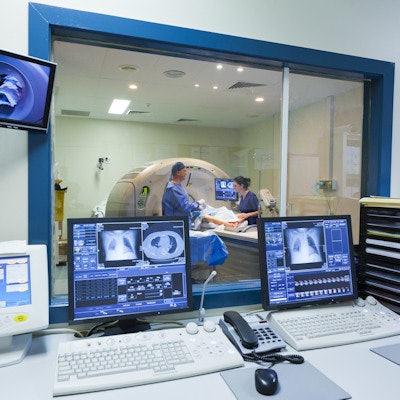
Direct communication by radiologists with referring clinicians can significantly improve compliance with follow-up recommendations contained in musculoskeletal MRI reports, according to research published online December 30 in the American Journal of Roentgenology.
After retrospectively reviewing over 650 musculoskeletal MRI reports, researchers from Columbia University Medical Center in New York City found that radiologist recommendations were more than 25% more likely to be followed up when communicated to the clinician over the phone or via email.
"Direct communication improves compliance and may be particularly helpful for orthopedic referrers," wrote a team of authors led by John Nemer.
Seeking to investigate trends in follow-up recommendations in musculoskeletal MRI reports, the researchers queried their database for musculoskeletal MRI reports produced between January 2016 and January 2018. They found an overall 73% compliance rate with radiologist recommendations.
Delving deeper into the analysis, the authors found that recommendations that were communicated directly with clinicians via email or over the phone had a compliance rate of 93%, compared with 71% without direct communication. The difference was statistically significant (p < 0.001).
Although additional imaging was the most frequent follow-up recommendation, requests for more imaging also had the lowest compliance rate, the researchers noted.
"There are certainly cases when a clinician can appropriately determine that additional imaging is not required," they wrote. "Excluding this scenario and in the setting of a true lack of compliance, clinician- and patient-related factors may both be responsible for the failure."
Of the 109 reasons for further follow-up recommendations that weren't acknowledged by the clinician, 80 (73%) were due to concern for neoplasm. The researchers also found that more than 26% of the 291 reports that were suspicious for neoplasm and had follow-up compliance were confirmed to have a neoplasm on subsequent workup. These cases included concern for prostate cancer metastases, chondrosarcoma, pancreatic cancer, spinal cord glioma, and tonsillar cancer.
"The effect of not following up is not trivial," the team wrote. "Of the recommendations citing suspicion for neoplasm that were followed, 8% were proven to be malignant on subsequent workup. ... A similar rate of malignancy could be assumed in the cases that were not acknowledged, further highlighting the importance of seeking ways to improve compliance to radiology recommendations."
The researchers did not find any difference in compliance with recommendations based on conditionality and time intervals, nor by radiologist experience level. By referring specialty, internists had a significantly higher rate for both acknowledging and following radiologist recommendations compared with orthopedists.
"Surprisingly, orthopedists were not more likely to follow a recommendation even when it related to a concern outside their area of expertise," they wrote. "It is conceivable that orthopedists may have additional information unknown to radiologists for recommendations relevant to the musculoskeletal system and therefore may be more capable of making an alternative clinical decision without the need for further evaluation. Conversely, when faced with recommendations pertaining to findings outside the musculoskeletal system, orthopedists may have lower compliance because of poor handoffs in care."



















